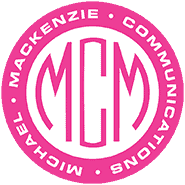Whether they are buying new window treatments for your home or logo-branded premium items in their corporate colors, individuals as well as marketing professionals invest heavily in setting their style and promoting their brand. Yet often our best efforts are sabotaged by well-meaning spouses who bring home tacky Barcaloungers and rogue sales people who design their own postcards using PowerPoint. You can always hide that chair in the basement but once 500 postcards with your logo printed in lime green hit the desks of your best customers there is no taking them back.
Magazines and newspapers rely on style books (like AP) to set the guidelines for how reporters and copywriters should groom their content. Businesses large and small can take a tip from this premise and create their own style guide. A style guide doesn’t have to be lengthy or complex but should provide employees and business partners with standards for presenting your corporate image.
First explain the correct colors for your logo. Red comes in many shades but when you provide the RGB, PMS and CMYK combinations you eliminate mistakes made by graphic and web designers as well as printers.
Next, if you have different logos for different products or services, spell out which logo is to used where and by whom. Don’t assume that people know or will use the right one. Further, it pays to specify not only which logo to use but how and where it should be positioned in juxtaposition to other logos and elements on the page or screen.
Further, if you want all of your written communications to appear in palatino linotype then spell it out because Microsoft Word defaults to times new roman. (Better yet, consider creating a new Letter template or a new normal.DOT file.)
If you want all phone numbers to be formatted as 888.555.1212 instead of (888) 555-1212, then you need to specify that, too.
Of course the list here could be endless and it all really depends on your business. Fortunately a style guide can and should be a living breathing document that you change as your business grows. If you’d like to preview a few examples to gather ideas about what you might include and learn ways to present the information, check out these:


